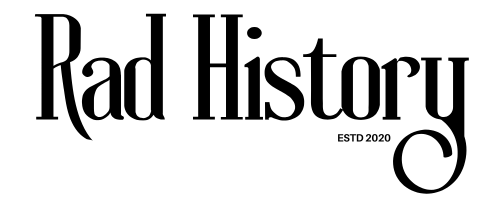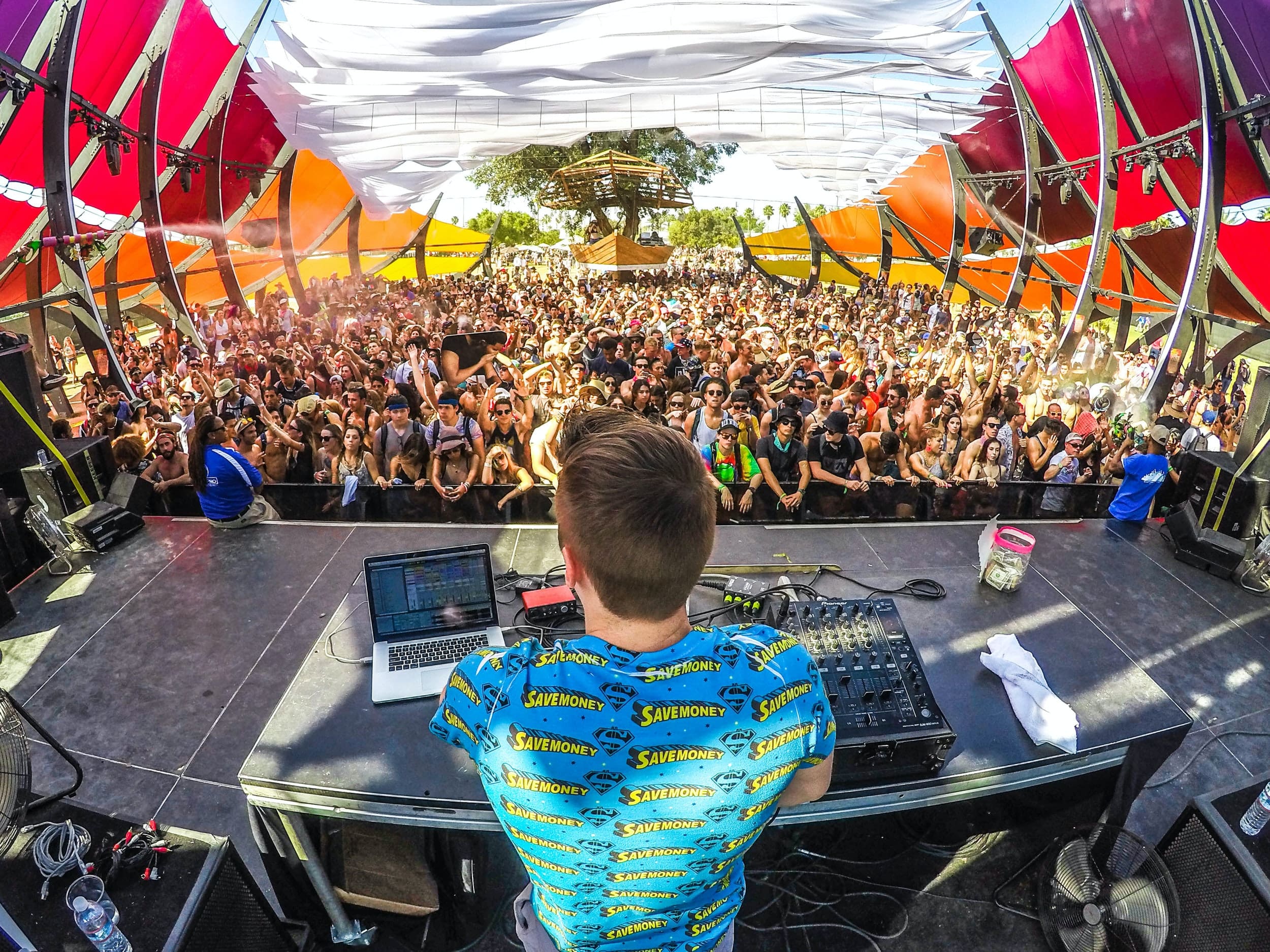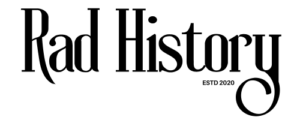Electronic dance music emerged from the gritty warehouses of Chicago and Detroit in the 1980s, spawning a cultural revolution that would reshape the music industry. What began as underground parties featuring house and techno music has evolved into a $7.3 billion global industry dominated by massive festivals and superstar DJs.
The transformation from secret warehouse gatherings to mainstream festival culture represents one of the most significant shifts in modern music history. Pioneering artists like Frankie Knuckles and Juan Atkins laid the foundation for EDM’s explosive growth, crafting innovative sounds on basic equipment while building passionate communities around their music.
These humble beginnings stand in stark contrast to today’s EDM landscape, where festivals draw hundreds of thousands of attendees and top producers command multimillion-dollar contracts. The genre’s journey from underground to mainstream offers fascinating insights into how subcultures can shape popular entertainment and create entirely new business models.
Origins of Electronic Dance Music
Electronic dance music emerged in the 1970s through a combination of disco’s infectious rhythms and groundbreaking developments in music technology. The fusion of these elements created an entirely new form of musical expression.
The Disco Influence
The pulsating four-on-the-floor beat of disco laid the foundation for electronic dance music. Artists like Giorgio Moroder pioneered the use of electronic instruments in disco production, creating hits like Donna Summer’s “I Feel Love” in 1977.
Iconic disco venues like New York’s Paradise Garage and Chicago’s Warehouse became testing grounds for DJs to experiment with extended mixes and electronic sounds. These clubs served as incubators for new subgenres of electronic music.
DJ Francis Grasso introduced beatmatching techniques at New York’s Sanctuary club, revolutionizing how dance music was mixed and presented to audiences.
Rise of Synthesizers and Drum Machines
The Roland TR-808 drum machine and TB-303 bass synthesizer transformed electronic music production after their release in 1980 and 1981. These affordable instruments enabled musicians to create complex rhythms and basslines without traditional instruments.
German band Kraftwerk demonstrated the potential of synthesizer-based music with albums like Trans-Europe Express (1977) and The Man-Machine (1978). Their innovative approach influenced countless electronic artists.
Early pioneers like Yellow Magic Orchestra integrated computer-based music production with traditional instruments, establishing new possibilities for electronic sound creation.
The Fairlight CMI sampler, introduced in 1979, allowed artists to record and manipulate real sounds digitally, expanding the sonic palette of electronic music.
Underground Scene and Warehouse Parties
The underground electronic dance music scene emerged in abandoned warehouses and secret locations during the 1980s, creating a revolutionary cultural movement that prioritized freedom of expression and musical experimentation.
Illegal Raves and Acid House
Illegal warehouse parties gained momentum in Chicago and Detroit between 1984-1988, with DJs setting up sound systems in vacant industrial spaces. These events often attracted thousands of dancers who would follow cryptic directions or call underground hotlines to find locations.
The UK’s acid house movement adopted this format in 1987, with legendary parties like Shoom and The Trip bringing the sound to London’s abandoned docklands. Promoters would scout locations just hours before events to stay ahead of authorities.
The scene developed its own visual aesthetic, with fluorescent clothing, smiley face symbols, and psychedelic imagery becoming cultural markers of the movement.
Notable Underground Clubs
The Warehouse in Chicago became the spiritual birthplace of house music under DJ Frankie Knuckles from 1977-1983. The venue’s raw industrial setting created an intimate atmosphere that influenced club design for decades.
Paradise Garage in New York operated from 1977-1987, featuring DJ Larry Levan’s innovative sound system and musical programming. The club’s setup became a template for modern dance venues.
The Haçienda in Manchester transformed a former yacht showroom into an influential space that merged post-punk with early house music. Its distinctive industrial design inspired countless venues worldwide.
These pioneering spaces established many conventions of modern club culture, from custom sound systems to the relationship between DJs and dancers.
Commercialization and Mainstream Acceptance
Electronic dance music transformed from underground warehouse parties into a multi-billion dollar industry, with major record labels and festival promoters capitalizing on its growing popularity.
Chart-Topping Hits and Superstar DJs
The rise of EDM in mainstream music accelerated in 2010 when David Guetta produced “I Gotta Feeling” for The Black Eyed Peas, reaching #1 on Billboard’s Hot 100.
Swedish House Mafia broke records with “Don’t You Worry Child” in 2012, marking EDM’s definitive crossover into pop music. The track sold over 5.5 million copies worldwide.
DJs like Calvin Harris, Avicii, and Zedd became household names, commanding six-figure performance fees. Harris earned $48.5 million in 2013, making him the highest-paid DJ in the world.
EDM in Popular Culture
Major brands embraced EDM culture, with Coca-Cola, T-Mobile, and Intel featuring electronic music in their advertising campaigns.
Video games integrated EDM soundtracks, with FIFA and Grand Theft Auto licensing tracks from prominent producers. EA Sports’ FIFA series introduced millions of players to electronic music through its in-game playlists.
Television shows and films incorporated EDM scenes, with movies like “Project X” (2012) and “We Are Your Friends” (2015) focusing on DJ culture. The 2014 Grammy Awards added an Electronic/Dance category, legitimizing the genre in mainstream music awards.
Evolution of Genres and Subgenres
Electronic dance music evolved through distinct waves of innovation, with pioneering artists and regional scenes creating new sounds that transformed the musical landscape.
House Music and Techno Roots
House music emerged from Chicago’s Warehouse club in the early 1980s, with DJ Frankie Knuckles blending disco, soul, and electronic elements. The distinctive four-on-the-floor beat pattern became house music’s signature rhythm.
Detroit techno developed simultaneously through the work of the Belleville Three: Juan Atkins, Derrick May, and Kevin Saunderson. Their futuristic sound incorporated Roland TR-808 and TR-909 drum machines with synthesizers.
Underground producers experimented with these foundations, creating subgenres like acid house, deep house, and minimal techno. The UK’s Second Summer of Love in 1988-89 helped spread these styles across Europe.
Trance, Dubstep, and Beyond
Trance music gained momentum in the 1990s, characterized by hypnotic melodies and building progressions. German producers like Paul van Dyk and Sven Väth shaped the genre’s euphoric sound.
Dubstep emerged from London’s underground scene in the late 1990s, featuring:
- Heavy sub-bass frequencies
- Syncopated drum patterns
- Half-time rhythms
- Dark, atmospheric elements
The 2010s saw the rise of EDM subgenres like future bass, tropical house, and bass house. Digital production tools allowed artists to blend elements from multiple styles, creating hybrid genres and pushing sonic boundaries.
Global Expansion and Cultural Impact
Electronic dance music transformed from underground warehouse parties into a global cultural phenomenon that shaped entertainment, fashion, and lifestyle choices across continents.
EDM Festivals around the World
Tomorrowland in Belgium emerged as one of the largest EDM festivals, attracting over 400,000 attendees annually since 2005. The festival’s success inspired similar events worldwide.
Ultra Music Festival expanded from Miami to locations in Asia, Europe, and South America. The festival now operates in 23 countries, including South Korea, Croatia, and Brazil.
Electric Daisy Carnival (EDC) grew beyond its Las Vegas base to host events in Mexico, Japan, and China. The festival’s signature elaborate stages and carnival atmosphere influenced event production standards globally.
Influence on Fashion and Lifestyle
Festival fashion became a distinct style category, characterized by neon colors, LED accessories, and distinctive patterns. Major clothing retailers launched festival-specific collections to meet growing demand.
The PLUR (Peace, Love, Unity, Respect) philosophy spread from dance floors to mainstream youth culture. Festival attendees adopted signature accessories like beaded bracelets called “kandi” to trade at events.
EDM culture influenced wellness trends, with festivals introducing yoga sessions, meditation spaces, and alcohol-free zones. Many events now emphasize sustainability practices and eco-friendly initiatives.
Dance music fashion impacted streetwear through collaborations between DJs and clothing brands. Artists like Daft Punk and Deadmau5 turned their stage costumes into recognizable fashion statements.
Technological Advancements in DJing and Production
Electronic music technology has transformed from analog equipment to sophisticated digital tools, revolutionizing both live performances and studio production.
From Vinyl to Digital Software
The transition from vinyl records to digital formats marked a significant shift in DJ culture. Pioneer’s CDJ-1000 revolutionized clubs in 2001 by allowing DJs to manipulate digital tracks like vinyl.
Serato and Traktor software emerged in the mid-2000s, enabling DJs to control digital music libraries with specialized vinyl control records. These platforms introduced features like loops, effects, and precise tempo control.
Digital Audio Workstations (DAWs) like Ableton Live and FL Studio gave producers powerful tools for creating electronic music. These programs offered virtual synthesizers, samplers, and automated mixing capabilities.
Visuals and Stage Design
LED technology transformed EDM performances into immersive multimedia experiences. High-resolution screens and mapping software allowed for synchronized visuals with music.
Modern festival stages incorporate moving light arrays, laser systems, and pyrotechnics controlled by digital consoles. Companies like d3 Technologies developed media servers that coordinate complex visual shows with musical elements.
Gesture-controlled interfaces and motion sensors enable DJs to trigger visuals through physical movements. Artists like Deadmau5 pioneered custom LED headgear and stage designs that became iconic in EDM culture.
Challenges and Criticism
Electronic dance music faces significant pushback regarding authenticity and talent requirements, while large-scale events struggle with safety and security issues.
Debate over Authenticity and Talent
Critics argue that EDM production requires minimal musical training compared to traditional instruments. Many point to the widespread use of pre-made loops and samples as evidence of reduced creativity.
The rise of “press play” DJs who pre-record sets has sparked heated debates within the dance music community. Veterans like Deadmau5 have publicly criticized artists who fake live performances.
Some industry professionals defend modern production methods, noting that digital tools simply represent the evolution of musical instruments. They emphasize that creating quality electronic music demands extensive technical knowledge and artistic vision.
Safety Concerns at Events
Drug use and dehydration remain persistent problems at EDM festivals and events. MDMA and other substances have been linked to multiple deaths at major music festivals between 2010-2024.
Overcrowding at venues has led to dangerous situations. The 2010 Love Parade disaster in Germany, where 21 people died in a crowd crush, highlighted the risks of insufficient crowd control.
Many promoters have implemented stricter security measures, medical stations, and free water stations. Drug testing services have become more common at European festivals to reduce overdose risks.
Festival organizers now frequently use advanced crowd monitoring systems and improved venue designs to prevent dangerous bottlenecks.




